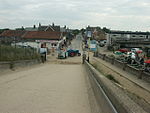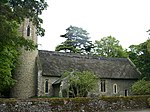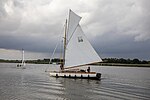Waxham

Waxham is a village and former civil parish, now in the parish of Sea Palling, in the North Norfolk district, in the county of Norfolk, England. It lies on the north-east coast of the county. Buildings in the village include Waxham Hall, the 14th-century St. John's Church and the 16th-century Waxham Great Barn. Waxham Hall is reputedly haunted by the ghosts of six members of the Brograve family, all of whom died in battle. It is said that an 18th-century owner of the house once invited them all to dinner. Waxham Great Barn (Listed Grade 1) built about 1570, at 178 feet long is one of the largest barns of its age in the country. It has recently been restored and opened to the public. The village has an extensive beach backed by dunes. Many migrant birds pass through the area in spring and autumn and common cranes feed in fields near the village. In 1931 the parish had a population of 84.
Excerpt from the Wikipedia article Waxham (License: CC BY-SA 3.0, Authors, Images).Waxham
Waxham Road, North Norfolk Sea Palling
Geographical coordinates (GPS) Address Nearby Places Show on map
Geographical coordinates (GPS)
| Latitude | Longitude |
|---|---|
| N 52.7788 ° | E 1.6151 ° |
Address
Waxham Road
Waxham Road
NR12 0EA North Norfolk, Sea Palling
England, United Kingdom
Open on Google Maps









